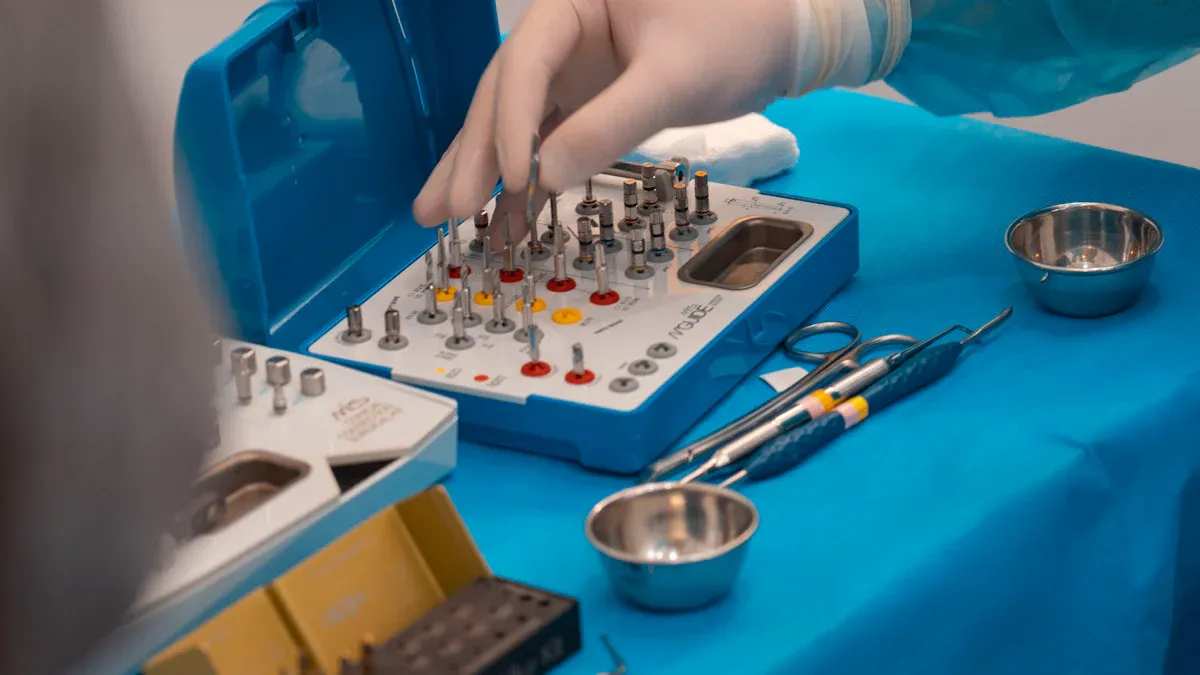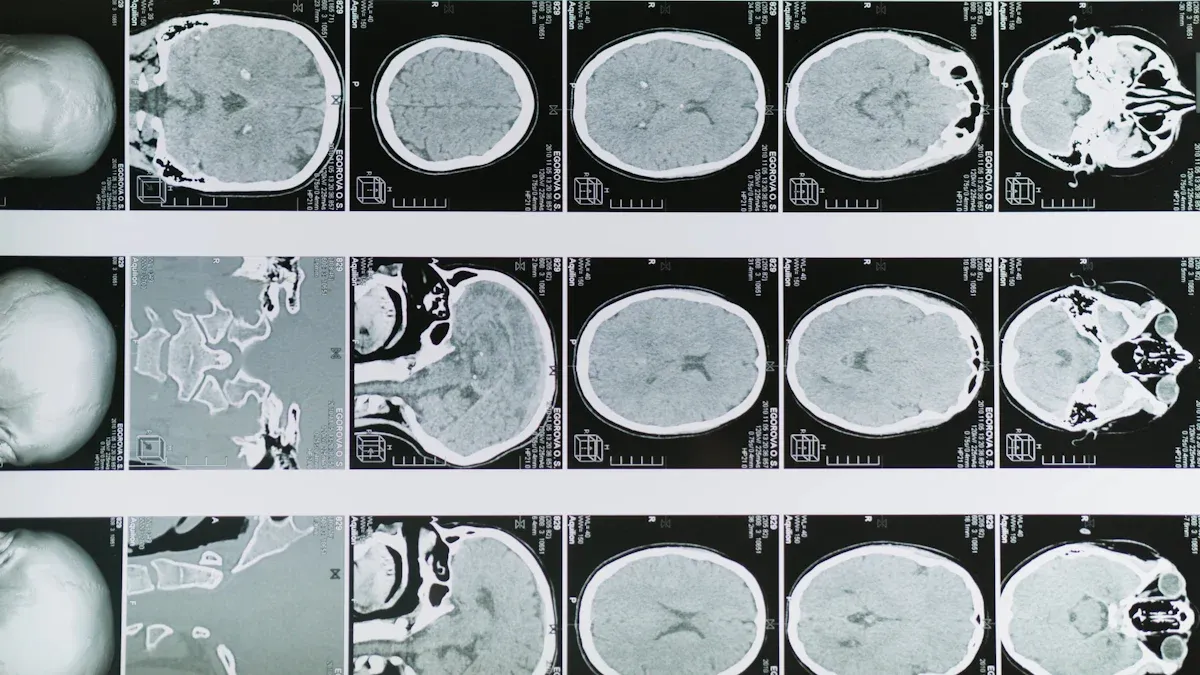The Role of ISO 13485 in Medical-Grade FEP Tubing Manufacturing

ISO 13485 Medical FEP Shrink Tubing certification plays a vital role in the production of medical-grade heat shrink tubing. It ensures that manufacturers adhere to strict quality standards, safeguarding the reliability of products used in medical applications. Without this certification, businesses face serious risks, including legal vulnerabilities, FDA warning letters, and potential penalties. Violations often require corrective actions, which can disrupt manufacturing processes. By implementing ISO 13485 Medical FEP Shrink Tubing standards, manufacturers can meet regulatory demands, prevent defects, and maintain trust with customers and regulators.
Key Takeaways
ISO 13485 certification makes sure companies follow strict quality rules. This improves product safety for medical use.
Using ISO 13485 helps companies work better, make fewer mistakes, and save time.
Tracking how products are made is important to find problems fast. This keeps patients safe and follows the rules.
ISO 13485 certification helps companies gain trust from customers and regulators. It also makes selling in other countries easier.
Regular checks and improving processes are needed to keep ISO 13485 certification and follow the rules.
What is ISO 13485 Certification?

Overview of ISO 13485
Definition and purpose of ISO 13485
ISO 13485 is an internationally recognized standard for quality management systems specific to the medical device industry. It focuses on ensuring that manufacturers consistently produce safe and effective products for medical applications. Unlike general quality standards like ISO 9001, ISO 13485 emphasizes regulatory compliance and risk management. This certification demonstrates a company’s commitment to delivering high-quality medical devices while adhering to stringent global regulations.
The primary objectives of ISO 13485 include:
Establishing a robust quality management system (QMS).
Enhancing product quality and patient safety.
Reducing risks and minimizing defects.
Fostering continuous improvement within organizations.
Key principles of the standard
ISO 13485 operates on several key principles that guide manufacturers in achieving compliance. These principles include risk-based thinking, process control, and traceability. Risk management plays a critical role in identifying and mitigating potential issues during production. Process control ensures consistency in manufacturing, while traceability allows manufacturers to track components and materials throughout the supply chain. Together, these principles help maintain the integrity of medical-grade products like FEP shrink tubing.
Relevance to Medical Device Manufacturing
Why ISO 13485 is critical for medical-grade products
ISO 13485 certification is essential for medical device manufacturing. It ensures rigorous controls to prevent defects and failures, reducing the chances of recalls and reputational damage. By adhering to this standard, manufacturers can streamline the approval process for global distribution and demonstrate their commitment to delivering safe, high-quality products. Without certification, companies face increased regulatory scrutiny, legal liabilities, and difficulties in ensuring product safety.
Regulatory alignment with global standards
ISO 13485 aligns with global regulatory standards, making it a cornerstone for international compliance. Regulatory bodies like the FDA and EMA recognize this certification, which simplifies the approval process for medical devices. In the U.S., it supports FDA 510(k) clearance or Premarket Approval, while in Europe, it is essential for CE marking. Additionally, ISO 13485 requires manufacturers to comply with local regulations, ensuring that products meet both international and regional requirements.
Importance of ISO 13485 in Medical-Grade FEP Shrink Tubing

Ensuring Quality Control
Role of ISO 13485 in maintaining consistent product quality
ISO 13485 ensures that manufacturers of medical-grade heat shrink tubing maintain consistent product quality. This standard enforces strict quality control measures, including the establishment of product requirements, process definitions, and supporting documentation. It also outlines the necessary infrastructure, work environment, and employee qualifications. By adhering to these guidelines, manufacturers can verify, validate, and monitor their processes effectively. These measures ensure that every batch of medical-grade FEP shrink tubing meets the same high standards, reducing variability and enhancing reliability.
Importance of traceability in manufacturing processes
Traceability is a cornerstone of ISO 13485. It allows manufacturers to track materials and components throughout the production process. This capability is critical for identifying and addressing issues quickly, minimizing the risk of defective products reaching the market. Traceability also supports compliance with regulatory requirements by organizing information for easy access and understanding. For medical device OEMs, this level of transparency builds trust and ensures that products meet stringent safety and quality standards.
Risk Management
Identifying and mitigating risks in FEP tubing production
ISO 13485 emphasizes risk management to identify and mitigate potential issues during manufacturing. Manufacturers must assess risks at every stage, from material selection to final inspection. This proactive approach prevents defects and ensures that medical-grade FEP shrink tubing performs as intended in critical applications. By addressing risks early, manufacturers can avoid costly recalls and maintain their reputation for quality assurance.
Preventing defects and ensuring patient safety
Defects in medical-grade heat shrink tubing can compromise patient safety. ISO 13485 requires manufacturers to implement rigorous controls to prevent such issues. These controls include process validation, regular inspections, and employee training. By prioritizing defect prevention, manufacturers protect patients and uphold the integrity of medical device manufacturing.
Regulatory Compliance
Meeting FDA and international medical device regulations
ISO 13485 aligns with global regulatory standards, including those set by the FDA and EMA. This alignment simplifies the approval process for medical devices, ensuring that products meet both international and regional requirements. For manufacturers, compliance with ISO 13485 medical FEP shrink tubing standards facilitates smoother market entry and reduces regulatory burdens.
Avoiding penalties and ensuring market access
ISO 13485 certification helps manufacturers avoid penalties by ensuring adherence to strict regulatory requirements. It also streamlines the approval process for global distribution, enabling easier access to markets like the U.S. and the EU. By enhancing process efficiency and minimizing defects, ISO 13485 ensures that manufacturers maintain market access and build trust with regulatory bodies and customers.
Key Benefits of ISO 13485 Medical FEP Shrink Tubing Certification
Global Market Access
How ISO 13485 facilitates entry into international markets
ISO 13485 certification opens doors to global markets for manufacturers of medical-grade FEP shrink tubing. Many countries, including the U.S. and the EU, require this certification for regulatory approval. By meeting these requirements, manufacturers can simplify the path to market and reduce time-to-market. Compliance with ISO 13485 also ensures that products meet international safety and efficacy standards, which minimizes the likelihood of defects or recalls.
This certification provides a structured approach to meeting regulatory stipulations. It grants manufacturers international acknowledgment as accredited suppliers of high-quality medical devices. These benefits make ISO 13485 essential for companies aiming to expand their reach and establish a global presence.
Building trust with regulatory bodies and customers
ISO 13485 certification builds trust with both regulatory bodies and customers by showcasing a manufacturer’s dedication to safety and quality. Regulatory agencies like the FDA and EMA recognize this certification, which streamlines the approval process for global distribution. Customers also view ISO 13485 as a mark of reliability, knowing that certified manufacturers adhere to stringent quality management standards.
Benefit | Description |
|---|---|
Ensure regulatory compliance | Certification ensures the organization meets international regulatory requirements, facilitating smoother approvals and compliance with bodies like the FDA, EMA, and other national health authorities. |
Build customer trust and satisfaction | Certification demonstrates a commitment to quality and safety, building customer trust and improving overall customer satisfaction. |
Enable market access | ISO 13485 certification is recognized globally, enabling more accessible entry into international markets and expanding business opportunities. |
Improved Manufacturing Processes
Streamlining operations through a quality management system
Implementing an ISO 13485-based Quality Management System (QMS) helps manufacturers streamline their operations. Standardized processes improve efficiency and reduce the risk of errors during production. This approach eliminates inefficiencies, accelerates time-to-market, and ensures consistent product quality. Manufacturers can also reduce costs by minimizing the likelihood of product recalls and warranty claims.
Reducing waste and increasing efficiency
ISO 13485 certification contributes to waste reduction by optimizing manufacturing processes. Procedures are designed to minimize errors, reduce material waste, and improve overall productivity. By adopting these practices, manufacturers can achieve cost savings while maintaining high standards of quality. This focus on efficiency benefits both the manufacturer and the end-user by ensuring reliable and cost-effective products.
Enhanced Customer Trust
Demonstrating commitment to safety and quality
ISO 13485 certification signifies a manufacturer’s commitment to producing safe and high-quality medical devices. This assurance is critical for medical device OEMs, who rely on certified suppliers to meet their own regulatory and quality requirements. Certification also reflects a company’s dedication to continuous improvement, which builds confidence among customers and stakeholders.
Building long-term relationships with clients and stakeholders
ISO 13485 certification fosters long-term relationships by ensuring consistent delivery of safe and effective products. Customers value the reliability of certified manufacturers, which enhances satisfaction and loyalty. Certification also strengthens partnerships with suppliers and collaborators by demonstrating a shared commitment to quality and safety. These relationships contribute to a strong reputation and sustained business growth.
Steps to Achieve ISO 13485 Certification
Establishing a Quality Management System (QMS)
Key components of a compliant QMS
A compliant quality management system forms the foundation for ISO 13485 certification. It ensures that manufacturing processes meet regulatory requirements and deliver consistent product quality. Essential components of a QMS include:
Document Management to maintain accurate records.
Training Management to ensure employee competence.
Quality Events tracking to address issues promptly.
Product Development processes to meet safety standards.
Closed-Loop Quality systems to monitor and improve performance.
These elements work together to create a robust framework for achieving compliance and maintaining high standards in medical-grade FEP tubing manufacturing.
Documentation and process standardization
Documentation and standardization are critical for achieving ISO 13485 certification. Proper documentation ensures that all processes are well-defined and consistently followed. Standardization aligns manufacturing practices with regulatory requirements, reducing variability and improving efficiency. A well-documented QMS not only supports compliance but also enhances product quality and reliability.
Undergoing Audits and Assessments
Preparing for internal and external audits
Preparation is key to successful audits. Manufacturers should conduct a management review 1-3 months before the Stage 1 audit to evaluate the QMS thoroughly. Internal audits focused on ISO 13485:2016 standards help identify gaps and address them proactively. Key steps include:
Determine audit goals and scope.
Perform an initial feasibility assessment.
Staff the audit team with qualified personnel.
Coordinate with impacted departments.
Review documentation to ensure audit readiness.
Addressing non-conformities and achieving certification
Addressing non-conformities requires a systematic approach. Corrective and Preventive Actions (CAPA) play a vital role in resolving issues. CAPA involves identifying root causes, implementing corrective measures, and verifying their effectiveness. Internal audits provide an opportunity to detect and fix non-conformities before the official certification audit.
Maintaining Certification
Continuous improvement and regular audits
Maintaining ISO 13485 certification demands ongoing effort. Regular internal audits help identify areas for improvement. Employee training ensures compliance and competence. CAPA processes address quality issues systematically, while management reviews evaluate the QMS's effectiveness. A culture of quality fosters continuous improvement across the organization.
Staying updated with regulatory changes
Regulatory requirements evolve over time. Manufacturers must adapt their QMS to align with these changes. Establishing a regulatory intelligence group helps monitor updates. Ongoing employee training ensures awareness of current standards. Staying informed and adaptable ensures long-term compliance and success in the medical device industry.
ISO 13485 certification serves as a foundation for ensuring the safety and quality of medical-grade FEP shrink tubing. It provides manufacturers with a structured framework to meet regulatory demands and maintain consistent product quality. By implementing ISO 13485, manufacturers can streamline operations, reduce inefficiencies, and enhance customer satisfaction. This certification also fosters trust with regulatory bodies and partners, enabling global market access and strengthening supplier relationships.
Benefit | Description |
|---|---|
Market Access and Global Trade Opportunities | ISO 13485 certification opens up global market opportunities, simplifying regulatory approval processes. |
Enhanced Product Quality and Customer Satisfaction | Ensures high-quality medical devices that meet regulatory and customer expectations. |
Streamlining Operations and Reducing Costs | Helps eliminate inefficiencies, reducing the risk of product defects and associated costs. |
Strengthening Supplier and Partner Relationships | Demonstrates commitment to quality, fostering better collaboration with suppliers and partners. |
ISO 13485 medical FEP shrink tubing certification ensures that products meet the highest standards of reliability and safety. For manufacturers, it represents a commitment to protecting patients and complying with global regulations. For end-users, it guarantees consistent, safe, and effective product performance.
FAQ
What is the primary purpose of ISO 13485 certification?
ISO 13485 ensures that manufacturers meet strict quality management standards for medical devices. It focuses on product safety, regulatory compliance, and risk management. This certification helps companies consistently deliver reliable and effective medical-grade products.
How does ISO 13485 benefit medical-grade FEP shrink tubing manufacturers?
ISO 13485 provides a structured framework for quality control, risk management, and regulatory compliance. It helps manufacturers streamline processes, reduce defects, and ensure consistent product quality. This certification also facilitates global market access and builds trust with customers and regulators.
Is ISO 13485 certification mandatory for medical device manufacturers?
While not always mandatory, ISO 13485 is often required to meet regulatory standards in many countries. It aligns with FDA, CE, and other international requirements, making it essential for manufacturers aiming to sell medical devices globally.
How long does it take to achieve ISO 13485 certification?
The timeline varies depending on the organization’s preparedness and resources. On average, it takes 6 to 12 months to implement a compliant quality management system, undergo audits, and address non-conformities before achieving certification.
What happens if a manufacturer fails to maintain ISO 13485 certification?
Failure to maintain certification can lead to regulatory penalties, loss of market access, and reputational damage. Regular audits and continuous improvement are essential to ensure compliance and uphold product quality standards.
💡 Tip: Manufacturers should conduct regular internal audits and stay updated on regulatory changes to maintain ISO 13485 certification effectively.
See Also
Selecting Optimal FEP Shrink Tubing for Class III Medical Applications
Latest Innovations in FEP Heat Shrink Tubing for Healthcare
Advantages of Using FEP Heat Shrink Tubing in Medicine
Best Suppliers for FEP Heat Shrink Tubing in Medical Solutions

